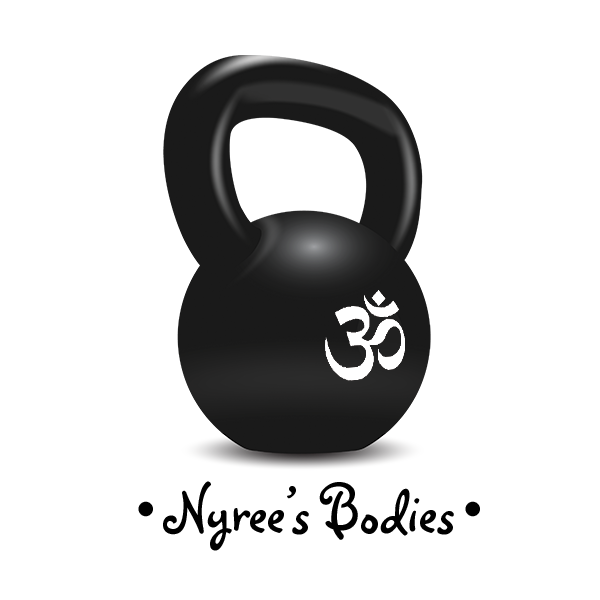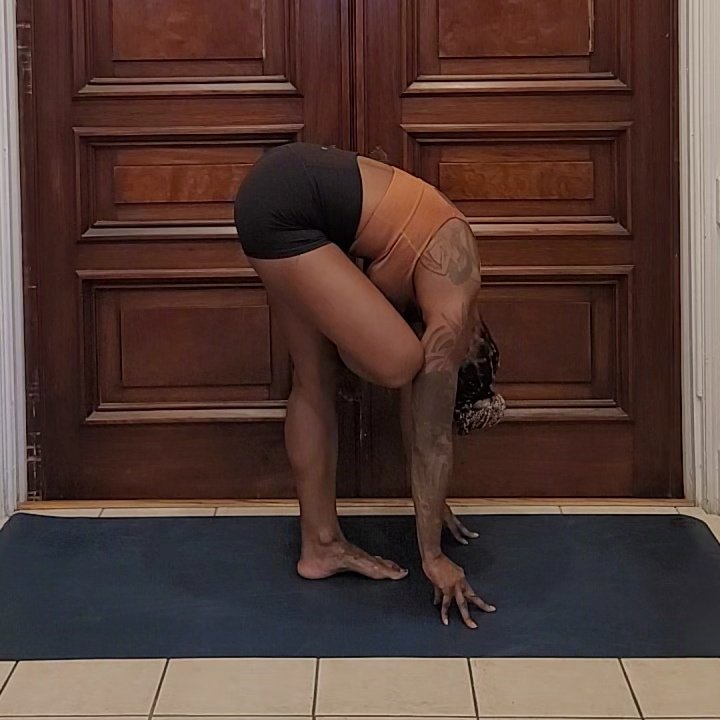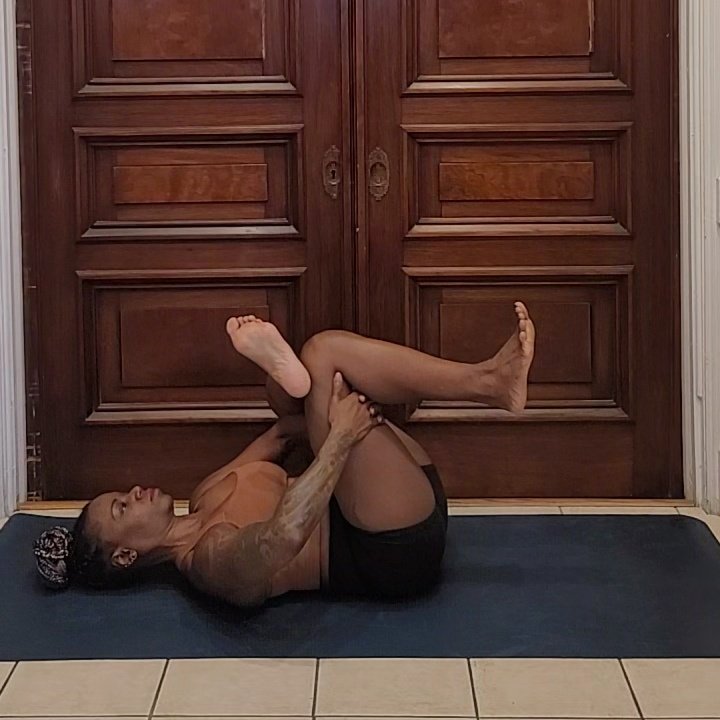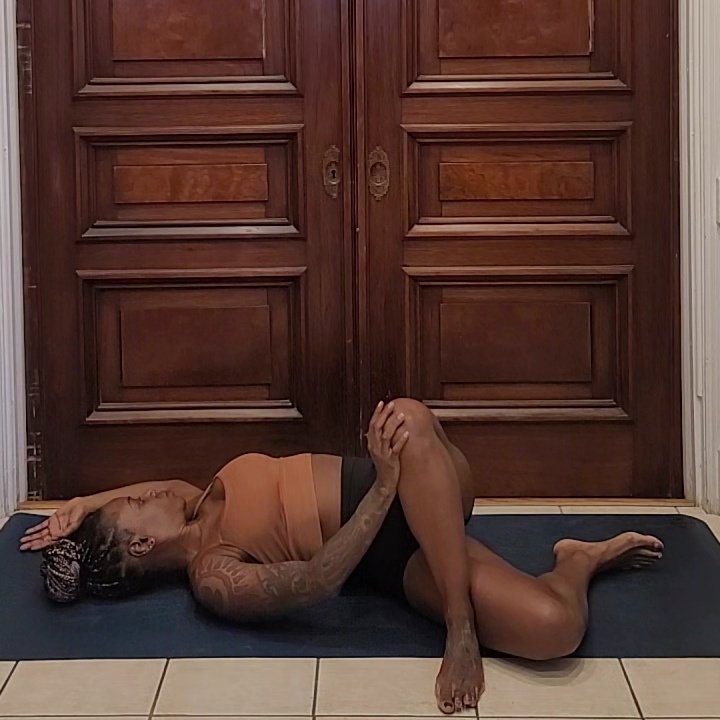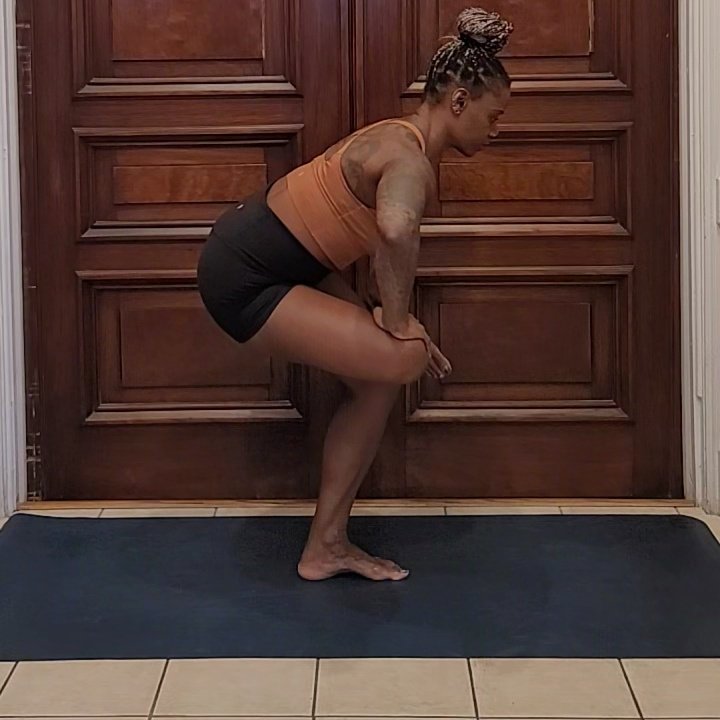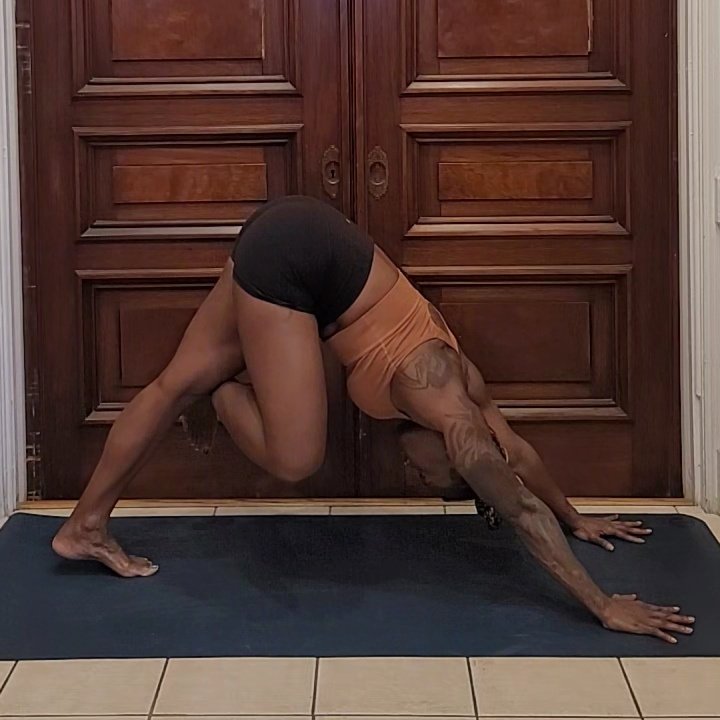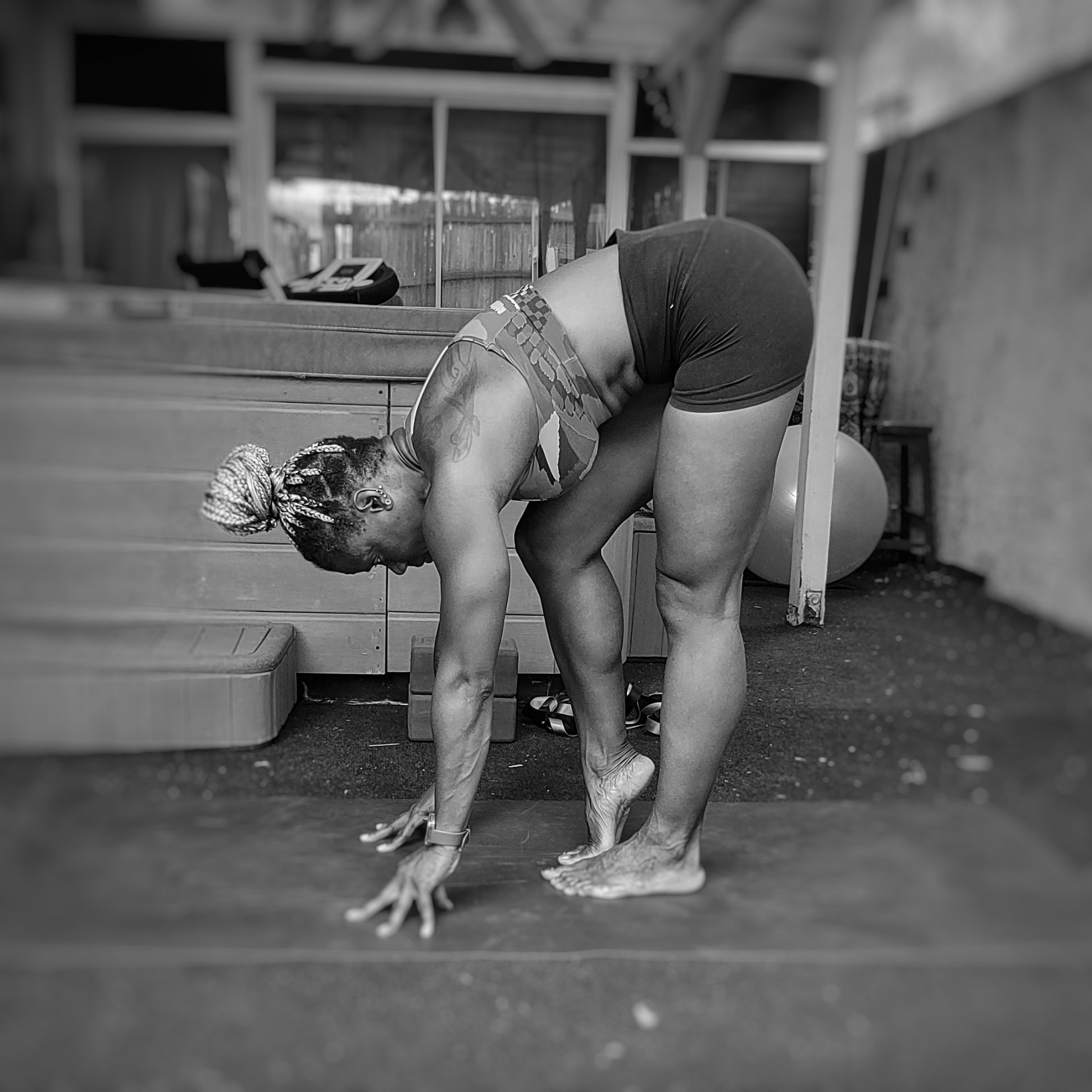Your Custom Text Here
The Figure Four Stretch and your Piriformis
The figure four is an important and often performed hip stretch for the piriformis
Standing Forward Folding Figure Four Stretch
The figure four is an important and often performed hip/glute stretch, usually as part of a series of other lower body stretches, like the ubiquitous standing quadriceps stretch where you bend at the knee and grab the foot in one hand with the opposite arm over head and the hamstring stretch where you’re leaning forward over a straight leg supported by the bent back leg while reaching for the toes (you know what I’m talking about), performed on a kind of auto pilot as one of those stretches you’re supposed to do. However, many don’t know what muscle they’re actually stretching and/or how to perform it properly. Unless you’ve been diagnosed with an ailment perpetuated by tightness in the piriformis, are a yoga practitioner or an athlete of some sort, most don’t actually understand the importance of this particular stretching exercise. Often the cause for pain, hip tightness and reduced mobility, let’s take a moment to break down the piriformis muscle, figure four stretch techniques and variations and why it’s an important stretch.
The piriformis muscle is one of the deep muscles of the hip joint whose primary job is external rotation; think standing with straight legs & feet forward then turning the feet outward like a ballet dancer. The piriformis muscle rotates the femur during the hip extension (the kick back and abducts (brings the leg toward the midline of the body) the femur (thigh bone) during flexion (Rockette kick) of the hip. Piriformis tightness or injury can come from doing too much exercise and overtraining. It is a repetitive stress issue that affects athletes like runners and cyclists. On the other hand piriformis tightness can occur from doing too little activity like sitting at a desk all day. If not managed, a tight piriformis can lead to a more severe issue, Piriformis syndrome. Piriformis syndrome is an underdiagnosed condition defined by pain and numbness in your buttocks and down the back of your leg which occurs when the piriformis muscle in the buttocks presses on the sciatic nerve.
The figure four stretch is the go to stretch to correct the issue of tightness and pain in the hips and increases mobility. To correctly perform the figure four stretch, place the ankle of the affected leg on the opposite thigh above the knee, then use your hand to gently push the knee of the affected leg away from your body holding for a few seconds then releasing. Repeat this 3-4 times. Daily.
This stretch should be performed regularly if you are an athlete or enthusiast who participates in repetitive motion physical activity of the lower body or sit for long periods of time to reduce the chances of feeling discomfort in the hip by way of the piriformis muscle.
Seated Figure Four
Forward Fold Figure Four
Reclining Figure Four
Reclining Figure Four with Spinal Twist
Standing Figure Four
Standing Forward Fold Figure Four
Figure Four in Downward Facing Dog
Reclining Figure Four with foot on the wall
Yoga for our feet: The preservation of foot mobility
Have you ever heard someone say “If your feet hurt, everything hurts.”? I know it can definitely feel that way. But somehow, we don’t often hear or read about maintaining foot mobility and flexibility until they begin to hurt regularly. After a day filled with unplanned walking and not wearing appropriate footwear or training in shoes that were too narrow, wide or didn’t offer the right amount of support, the day ends with some sort of limping home, kicking off those shoes and possibly a foot soak. Just like muscle soreness that occurs a day or two after an unusually intense workout, feet can experience the same sensation. And just like muscle and joint tightness that occurs in the body after that intense workout where we will perform mobility exercises to warm up before the next workout, the same should be said for training our feet. But how many of us actually perform mobility exercises specifically for the feet? I can bet very few do.
Anterior Foot Stretches
1. Sitting on heels with toes pointed. If this is too much on the knees, place a blanket or other cushioning between the knees and seat.
2. Lift knees from the floor, with hands on the floor for support or arms extended forward to add more core involvement. Hold for a few seconds, lower and repeat 3-4 times.
3. With hands on the floor, engage the core, press away from the floor and lift hips with weight resting on the tops of the feet. This is an advanced move. Hold for a few seconds, lower slowly and repeat 3-4 times.
Without being too anatomy heavy, the feet are a complicated interwoven structuring of bones, joints, ligaments, muscles, tendons and fascia designed to create what I like to call “active stability” at our foundation. The structure of our feet allow for movement in all directions, create cushioning for impact and stability for balance among other things. Humans are bipeds (ambulatory on two legs) and though having strong legs is helpful in locomotion, if the feet cannot create a stable base or move freely, any locomotion where the feet are involved will be impaired. Because of the complicated structure of the feet, creating and maintaining its mobility is possibly more of an intricate task. Here, I only address a few stretches that cover the anterior (top or front of foot) and the anterior (bottom or back of foot), in areas of the feet that feel particularly tight in the mornings when getting out of bed, when walking or running or hurt after wearing high heels or narrow foot wear.
Posterior Foot Stretches
1. With toes tucked under, sit on heels. This is an intense stretch for the underside/bottom of the foot. Sit upright with shoulders over the hips. Hold for a few seconds and breath, shift forward and repeat, holding for a longer duration each time. Repeat 3-4 times.
2. With toes tucked under, shift back and lift the knees. Hands can stay on the floor for support or arms up to engage the core to balance. The top of the thigh is parallel to the floor. Repeat 3-4 times holding for a longer duration each time.
3. Folding forward (hands on blocks if hands do not touch the floor), with one leg straight, bend the other knee and role up the the ball of the foot, placing weight on the ball, care full to not roll out to the toe side of the foot. Hold for a few seconds. Switch to the other foot. Repeat 3-4 times each foot, holding for a longer duration each time.
As our bodies age, starting at around middle age (45+ depending on how active you are), mobility begins to reduce making the addition of mobility exercises for all areas of our bodies necessary, not just the usual places such as hamstrings and lower back. Lack of mobility in our feet can change our gait (how we walk) and our stride length (less efficient ambulation). It can also lead to foot pain as well as other parts of the body due to the need to compensate for or adjust other areas from the reduced freedom of movement in the feet. As our literal foundation, performing yoga for our feet is a way to ad longevity and preserve our ability to maintain physically activity and ensure a healthy quality of life .
